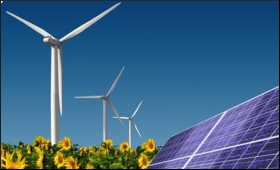With the basic customs duty on the import of solar cells/modules expected to kick in from FY23, do you expect the upcoming Union Budget to come up with incentives to somewhat offset the impact on final solar tariffs?
The objective of imposing basic customs duty (BCD) on imported solar cells (25%)/modules (40%) is to promote domestic manufacturing by making the domestic cells/modules competitive, and disincentivise project developers to import cells/modules. This is in alignment with the Atmanirbhar Bharat mission, as the solar industry is currently highly dependent on imports (mostly from China) for sourcing solar PV products. To take care of the potential increase in costs and keep the solar industry competitive, the government has already allocated incentives under the Production Linked Incentive (PLI) scheme. Further, the allocation under PLI is also planned to be increased, which we eagerly await. To match the timelines for the PLI, which is delayed by almost a year with the applicability of BCD, and considering the Covid impact, I expect that the government may like to defer the applicability of BCD by at least one year.
Further, the capacity for cell manufacturing in the country is still very limited and hence, BCD applicability on cells may have to be postponed even beyond one year. In the absence of matching the timelines of these two related policy provisions, the solar industry may see some price escalation in short to medium term.
Apart from the PLI scheme for domestic content manufacturing, what other steps can be taken by the government to promote local industries in the sector?
The government’s objective is to develop an end-to-end domestic manufacturing ecosystem in the country. Thus, a comprehensive approach is required to ensure competitiveness of the domestic market on a sustainable basis. While the PLI scheme and mandatory Approved List of Models and Manufacturers (ALMM) certification for modules is a significant step in this direction, more interventions are required to make Indian modules the first preference for developers in India and globally. Measures such as ensuring bankability of modules, development of manufacturing ecosystem, optimisation of domestic taxes and alignment of import duties with incentives are necessary.
Are there any issues regarding taxation on renewable energy equipment? Has the industry sought the government’s intervention in this regard?
GST on solar modules and wind equipment has recently been increased to 12%, from the earlier level of 5%. Components of remaining equipment and civil costs are anyway taxed at higher level. Given that there is no GST on power output, all these input taxes are a cost to the developer and impact the viability of the development.
Further, given the market expectations, it is difficult to pass on this cost to the buyers as discoms are reluctant to buy RE even at current prices. The industry has sought measures including reduction of GST to the earlier level of 5% and in parallel to bring power sales also in the ambit of GST.
Similarly, import duties on battery storage systems are close to 22%, which should be brought down to a level of 5% for next three years. This would help bring down the cost of batteries, incident tariff/cost for procurers of power and hence create demand for batteries. In turn, this would help in the establishment of domestic manufacturing ecosystem. Once domestic ecosystem is developing over next three to five years, higher rates of import duties may be reintroduced.
To attain the 500-GW non-fossil fuel based power generation capacity by 2030, annual renewable energy capacity additions need to be at unprecedented levels in the upcoming years. What measures can be taken in the upcoming Budget to enable that?
Annual capacity addition of 40-50 GW would be required to meet the 500 GW target by 2030, which is currently at around 10 GW. While the supply side can be ramped up in a short time, challenges with absorption of renewables is limiting the capacity growth. Although a detailed analysis and roadmap for achieving 500 GW target is required, some of the challenges are financial condition of discoms, and technical challenges in absorbing infirm renewable power. Discom reforms are a long-drawn exercise, but quick implementation of the draft Electricity Amendment Bill 2021 would be one step in that direction. Several provisions in the Bill, including delicensing of distribution, can galvanise distribution.
Dedicated corridors to evacuate RE power is another critical requirement. The government has recently announced Phase-2 of the Green Energy Corridor. However, absorption of RE is also impacted due to infirm nature and misalignment with demand. Mechanisms need to be devised for enhancing saleability of RE and may require bundling of different sources including storage solutions for balancing.
Technology and digitalisation would be a key driver to make this possible. As part of Budget and even beyond, rationalisation of taxes and duties for clean energy technologies and its enablers such as batteries and electrolysers is critical.
The Budget should include specific incentives for technologies such as battery and hydrogen, just as there has been recent focus on development of hydro and pumped storage projects.
Source: financialexpress.com








